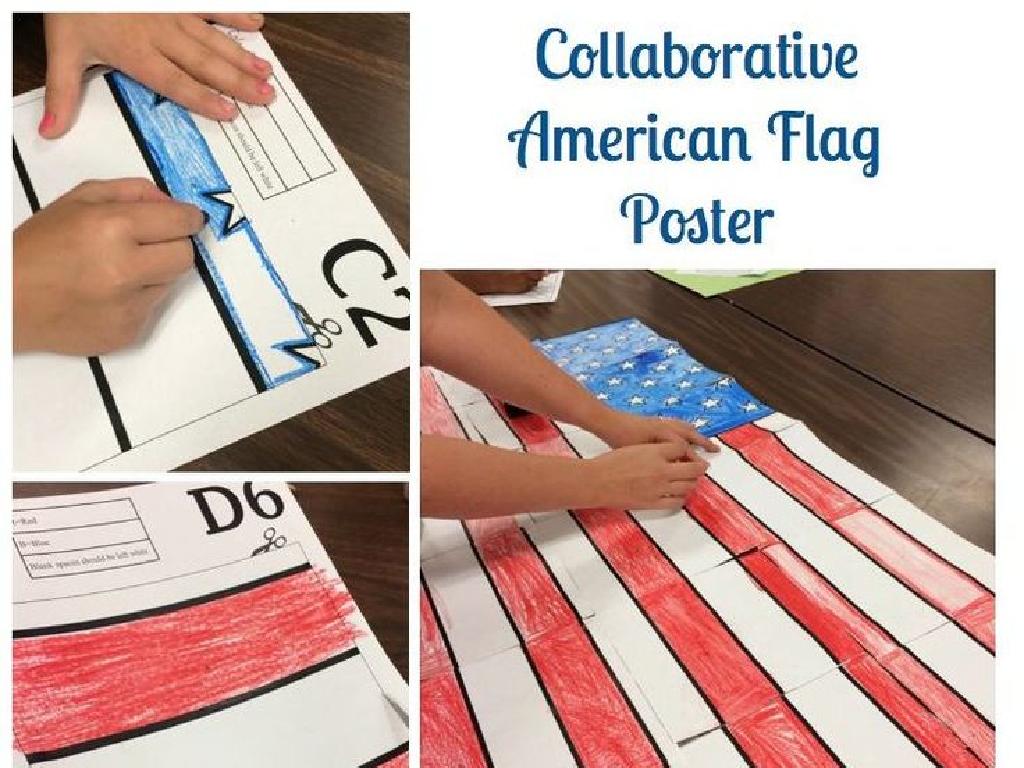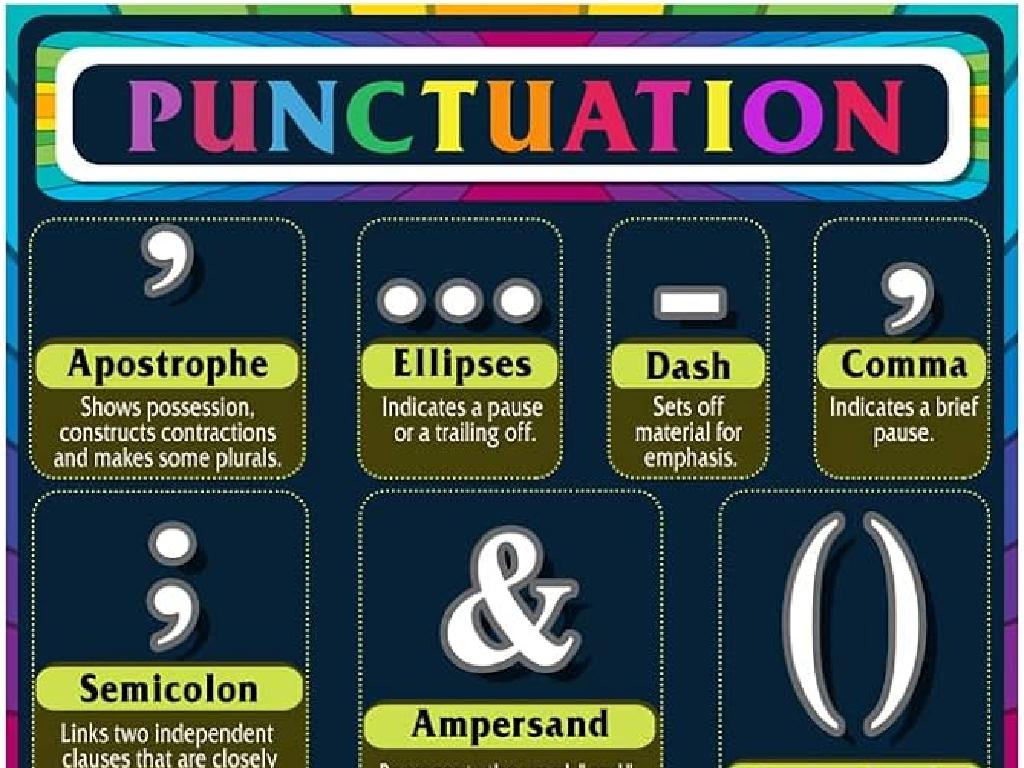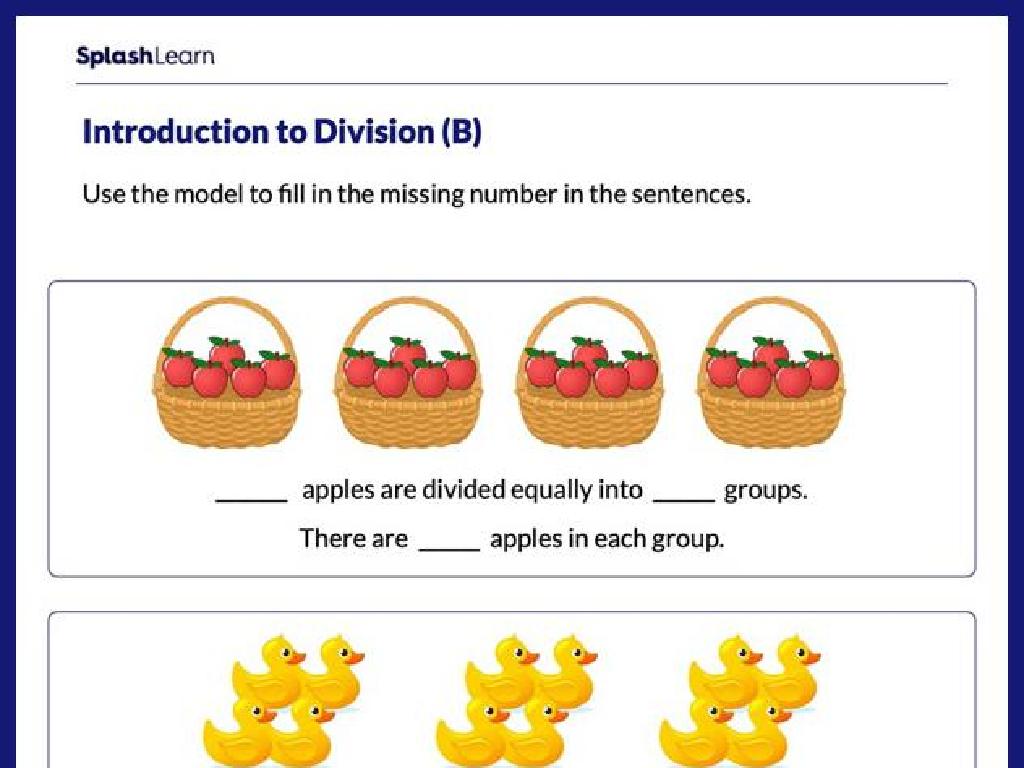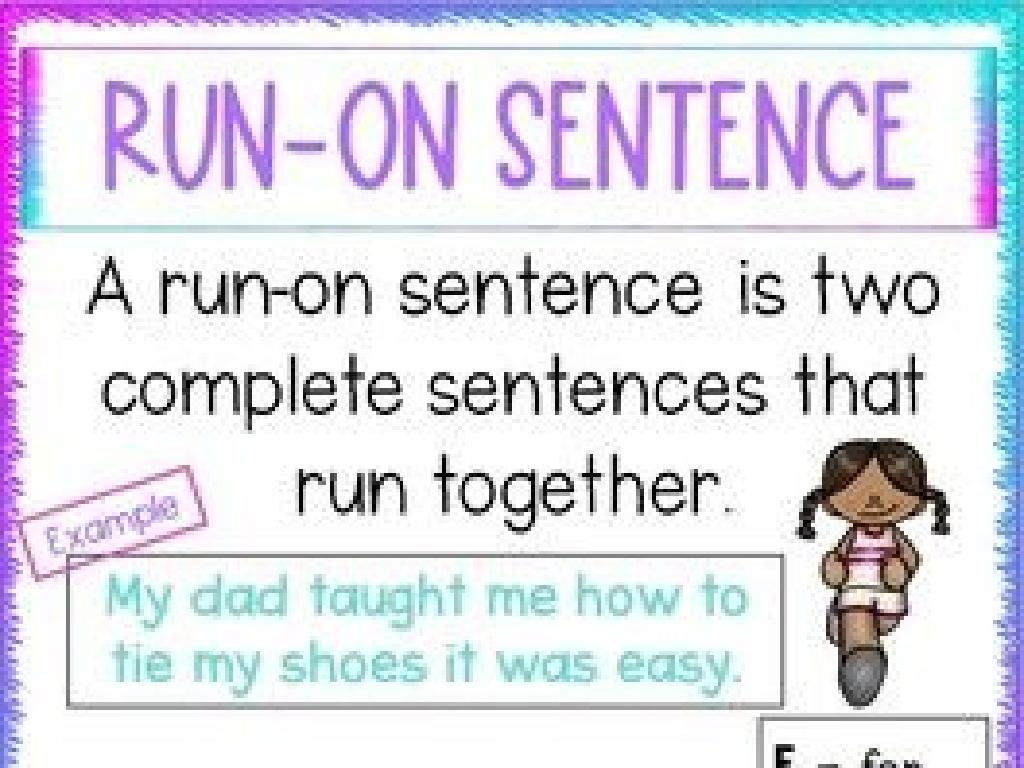Form Compound Words With Pictures
Subject: Language arts
Grade: Second grade
Topic: Compound Words
Please LOG IN to download the presentation. Access is available to registered users only.
View More Content
Welcome to Compound Words!
– Understanding compound words
– Two words put together to make one
– Everyday compound word examples
– Examples: ‘sunflower’, ‘toothbrush’, ‘playground’
– Combining words makes new meanings
– ‘Sun’ and ‘flower’ combine to mean a type of plant
– Activity: Create your own compound words
|
This slide introduces the concept of compound words to second-grade students. Begin by explaining that a compound word is formed when two words are combined to create a new word with its own meaning. Provide familiar examples that they likely encounter in their daily lives, such as ‘sunflower’, ‘toothbrush’, and ‘playground’. Highlight how each component word contributes to the meaning of the compound word. For the activity, encourage students to think of two words they can put together and illustrate the new word with pictures. This will help them understand and remember the concept of compound words. Provide guidance and ensure that each student can come up with at least one example of a compound word.
Building Blocks of Compound Words
– Compound words have two parts
– ‘Sun’ + ‘flower’ = ‘sunflower’
– ‘Sun’ is bright, ‘flower’ grows, together it’s a ‘sunflower’
– Each word part is a puzzle piece
– Like fitting puzzle pieces to make a whole picture
– Combining pieces creates new meaning
|
This slide introduces the concept of compound words to second graders by comparing them to puzzle pieces that fit together to create a new word with its own meaning. Start by explaining that all compound words are made up of two smaller words that are ‘building blocks.’ Use visual examples like ‘sun’ and ‘flower’ to show how two separate words can be combined to make a new word, ‘sunflower.’ Emphasize that each part of the compound word is essential, just like pieces of a puzzle, and when put together, they form a word with a unique meaning. Encourage students to think of other examples and consider how each part contributes to the meaning of the compound word. This will help them understand the concept of compound words and how they are formed.
Compound Word Matching Game
– Play a matching game with words
– Look at pictures to form compounds
– Combine two words shown in pictures to make a new word
– Interactive activity on the board
– Match picture pairs in front of the class
– Think of compound words they create
|
This slide introduces an interactive matching game designed to help second-grade students understand and form compound words. Set up a series of pictures on the board that can be paired to form compound words. For example, a picture of a tooth and a brush can be matched to form ‘toothbrush’. Encourage the students to come up to the board and draw lines between the pictures that form compound words. This activity will help students visualize the concept of compound words and reinforce their vocabulary through a fun and engaging class exercise. Prepare a list of picture pairs in advance and ensure there are enough examples for each student to participate. Consider offering stickers or small rewards for correct matches to motivate participation.
Create Your Own Compound Word
– Think of two words
– Combine to make a compound word
– Like ‘sun’ and ‘flower’ make ‘sunflower’
– Draw your words on a card
– Illustrate both words before combining
– Share with the class
|
This slide introduces a class activity focused on creating compound words. Students are encouraged to think creatively and combine two distinct words to form a new compound word. They will then draw representations of each word on a card, visually showing the components of their compound word. After completing their drawings, students will have the opportunity to present their compound word to the class, explaining their thought process and the meaning of the new word. This activity helps reinforce the concept of compound words and allows students to practice their speaking and presentation skills. For the teacher: Prepare blank cards for the students to draw on, and assist them in brainstorming words if needed. Encourage students to think about the meaning of their compound word and how the two original words relate to each other.
Compound Word Story Time
– Listen to a story with compound words
– Raise your hand for compound words
– When you hear a word like ‘cupcake’ or ‘rainbow’, raise your hand
– We’ll list the compound words together
– We’ll write them on the board as a class
– Understanding compound words
– Compound words are two words joined to make a new word
|
This slide introduces an interactive class activity focused on identifying compound words through storytelling. The teacher will read a story that includes a variety of compound words. Students are encouraged to actively listen and raise their hand when they recognize a compound word. This exercise helps students to not only identify compound words but also understand how two separate words can combine to create a new word with its own meaning. As each compound word is identified, it will be added to a collective list on the board, reinforcing the concept through visual aid. The activity is designed to be engaging and collaborative, fostering a fun learning environment while enhancing vocabulary skills.
Class Activity: Compound Word Hunt
– Pair up for a word hunt
– Search for compound words
– Look for words that combine two words into one
– Use classroom resources
– Check magazines, books, or word cards
– Record all compound words
– Write them down in your notebook
|
This activity is designed to encourage collaboration and active learning as students work in pairs to search for compound words within the classroom. Provide a variety of reading materials such as magazines, books, and word cards. Encourage students to look for words that are made up of two smaller words put together, like ‘sunflower’ or ‘basketball’. As they find each compound word, they should write it down. This will help them recognize and understand the concept of compound words. Possible variations of the activity could include a scavenger hunt with pre-placed compound words around the room, a timed challenge to find the most compound words, or creating their own compound words with picture cards.
Review and Share: Favorite Compound Words
– Review today’s compound words
– Share your favorite compound word
– Each pair picks one word from our word hunt
– Discuss why it’s interesting
– What makes this word stand out to you?
– Explain what makes it funny
– Is the word silly or unexpected in some way?
|
This slide aims to recap the day’s lesson on compound words and engage students in a reflective activity. Start by reviewing the compound words that were introduced during the lesson. Then, have students pair up and share their favorite compound word from the word hunt activity. Encourage them to discuss why they find their chosen word interesting or funny, which could be due to its meaning, sound, or the images it conjures up. This discussion helps reinforce their understanding of compound words and allows them to appreciate the playful aspects of language. As a teacher, facilitate the sharing process and ensure each pair has a chance to contribute to the class discussion.
Compound Words: Homework Fun!
– Congrats on learning compound words!
– Find 5 compound words around you
– Look for compound words at home or outside
– Draw or write the words you discover
– Use pictures or letters to show each word
– Show and tell in class tomorrow
|
This slide wraps up the lesson on compound words and assigns a fun homework task to reinforce the concept. Encourage the students to be observant of their surroundings to find compound words, which are two words joined to make a new word with a related meaning. They can look at objects, labels, or signs to find examples. Remind them to be creative with their drawings or writings and to be prepared for a show and tell session where they will share their findings with the class. This activity will help solidify their understanding of compound words and enhance their ability to recognize them in different contexts.





